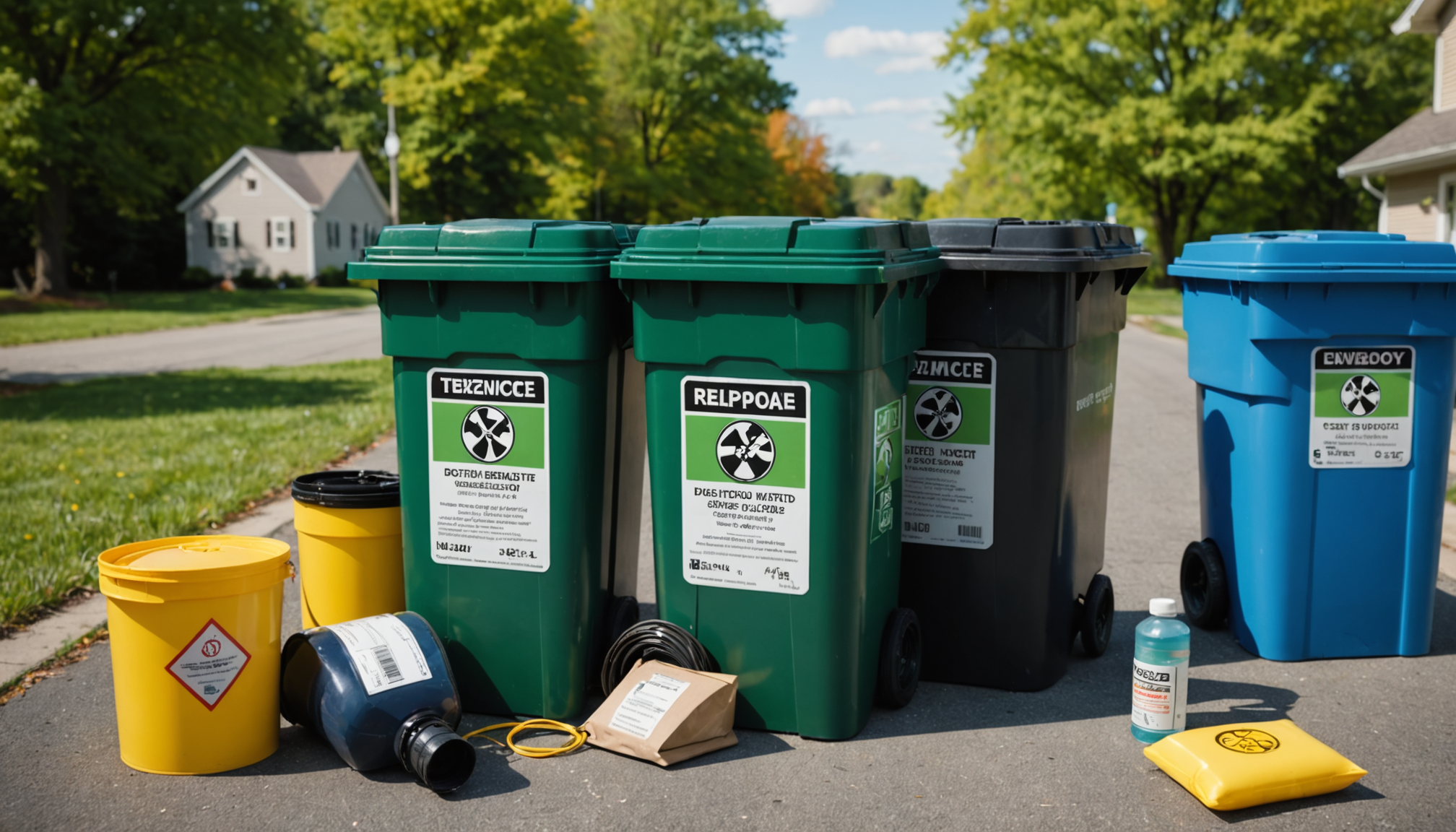
Bucks County Household Hazardous Waste Program Supports Sustainable Development Goals
Program Overview
On June 28, Bucks County, Pennsylvania, continued its Household Hazardous Waste Program, providing residents with an opportunity to safely dispose of hazardous materials. This initiative aligns with the United Nations Sustainable Development Goals (SDGs), particularly SDG 12 (Responsible Consumption and Production) and SDG 3 (Good Health and Well-being), by promoting safe waste management and reducing environmental pollution.
Accepted Hazardous Waste Items
The program accepts a variety of hazardous household waste products for safe and responsible disposal, supporting SDG 11 (Sustainable Cities and Communities) by maintaining a cleaner environment. The accepted items include:
- Up to 25 gallons or 220 pounds of hazardous products labeled with cautionary terms such as Danger, Warning, or Caution.
- Specific acceptable items:
- Pesticides
- Oil-based paint and paint products
- Automotive products (gasoline, motor oil, antifreeze)
- Pool chemicals
- Degreasers and cleaners
- Mercury thermostats
- Fluorescent tubes
- Fire extinguishers
- Mini propane tanks (two pounds or less)
- Lead-acid batteries (car, marine, motorcycle, and truck)
- Rechargeable, lithium, or button-type household batteries
Unacceptable Items
To ensure proper waste management and safety, the program excludes certain items, which supports SDG 15 (Life on Land) by preventing harmful substances from contaminating ecosystems. Unacceptable items include:
- TVs, computers, cell phones, and other electronics
- Appliances
- Asbestos
- Medical waste and prescription drugs
- Explosives, radioactive and unidentified waste
- Alkaline batteries
- Large gas cylinders
- PCBs, pressurized CFCs, and Freon
- Tires and smoke detectors
Safety Guidelines for Transporting Hazardous Waste
To promote community health and safety (SDG 3), residents are advised to follow these guidelines when transporting hazardous waste:
- Keep all products in their original containers with labels intact and lids securely closed.
- Place materials securely in a box to prevent spills.
- Wrap leaking containers in newspaper and place them inside a plastic container for transport.
- Avoid mixing different materials.
- Do not leave hazardous materials in vehicles or unventilated areas for extended periods.
- Refrain from smoking near any chemicals.
Program Sponsorship and Participation
The Household Hazardous Waste Program is sponsored by the Bucks County Commissioners and the Bucks County Planning Commission. It is designed exclusively for residential hazardous waste collection; businesses, industries, and institutions are not eligible to participate. Registration is not required, facilitating easy access for residents and encouraging community involvement in sustainable waste management.
Upcoming Collection Dates in 2025
Further collection events are scheduled to continue supporting sustainable waste disposal practices:
- August 9 at Bucks County Technical School, 610 Wistar Road, Fairless Hills, Bristol Township
- October 25 at Strayer Middle School, 1200 Ronald Reagan Drive, Quakertown
Additional Information
Residents seeking more details about the program and sustainable waste disposal practices can visit the official Bucks County recycling website: www.buckscounty.org/recycling.
1. Sustainable Development Goals (SDGs) Addressed or Connected
- SDG 3: Good Health and Well-being
- The article addresses safe disposal of hazardous household waste, which reduces health risks associated with exposure to toxic chemicals.
- SDG 6: Clean Water and Sanitation
- Proper disposal of hazardous waste prevents contamination of water sources.
- SDG 11: Sustainable Cities and Communities
- The program promotes safe and sustainable waste management practices within the community.
- SDG 12: Responsible Consumption and Production
- Encourages responsible disposal and management of hazardous waste products.
- SDG 15: Life on Land
- Prevents hazardous chemicals from polluting soil and ecosystems.
2. Specific Targets Under Those SDGs
- SDG 3 – Target 3.9: Reduce the number of deaths and illnesses from hazardous chemicals and air, water and soil pollution and contamination.
- SDG 6 – Target 6.3: Improve water quality by reducing pollution, minimizing release of hazardous chemicals and materials.
- SDG 11 – Target 11.6: Reduce the adverse per capita environmental impact of cities, including air quality and waste management.
- SDG 12 – Target 12.4: Achieve environmentally sound management of chemicals and all wastes throughout their life cycle.
- SDG 15 – Target 15.1: Ensure conservation, restoration and sustainable use of terrestrial and inland freshwater ecosystems and their services.
3. Indicators Mentioned or Implied to Measure Progress
- Indicator for SDG 3.9: Mortality rate attributed to household and ambient air pollution, and exposure to hazardous chemicals.
- Indicator for SDG 6.3: Proportion of wastewater safely treated and reduction in hazardous chemicals released into water bodies.
- Indicator for SDG 11.6: Municipal waste collected and managed in controlled facilities.
- Indicator for SDG 12.4: Number of parties to international multilateral environmental agreements on hazardous waste and chemicals that meet their commitments.
- Implied Indicators:
- Volume or weight of hazardous household waste collected and safely disposed of (e.g., up to 25 gallons or 220 pounds per resident).
- Number of collection events held and resident participation rates.
- Types and quantities of hazardous materials accepted and excluded.
4. Table of SDGs, Targets and Indicators
| SDGs | Targets | Indicators |
|---|---|---|
| SDG 3: Good Health and Well-being | 3.9: Reduce deaths and illnesses from hazardous chemicals and pollution | Mortality rate attributed to hazardous chemicals and pollution exposure |
| SDG 6: Clean Water and Sanitation | 6.3: Improve water quality by reducing pollution and hazardous chemical release | Proportion of wastewater safely treated; reduction in hazardous chemicals in water bodies |
| SDG 11: Sustainable Cities and Communities | 11.6: Reduce environmental impact of cities including waste management | Municipal waste collected and managed in controlled facilities |
| SDG 12: Responsible Consumption and Production | 12.4: Environmentally sound management of chemicals and wastes | Compliance with international agreements on hazardous waste; volume of hazardous waste safely collected |
| SDG 15: Life on Land | 15.1: Conservation and sustainable use of terrestrial ecosystems | Reduction in soil and ecosystem contamination from hazardous waste |
Source: patch.com






